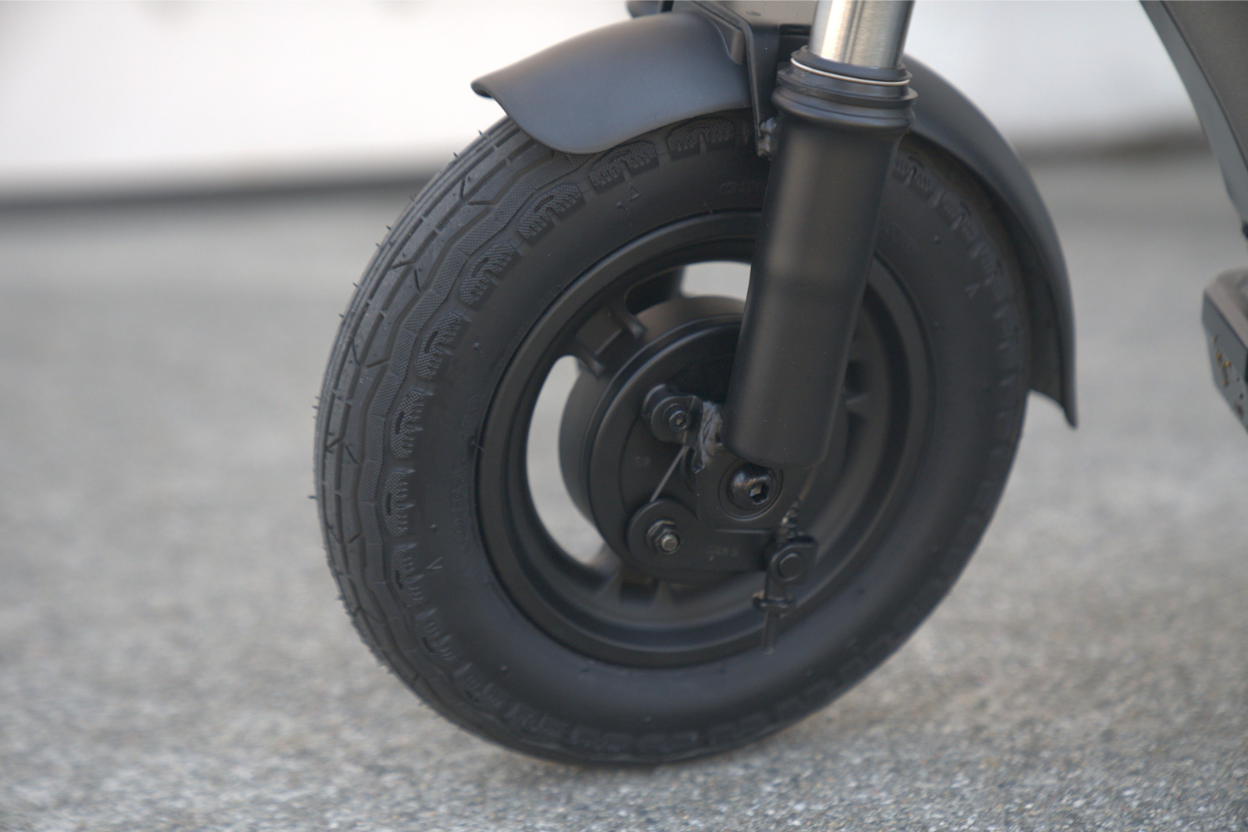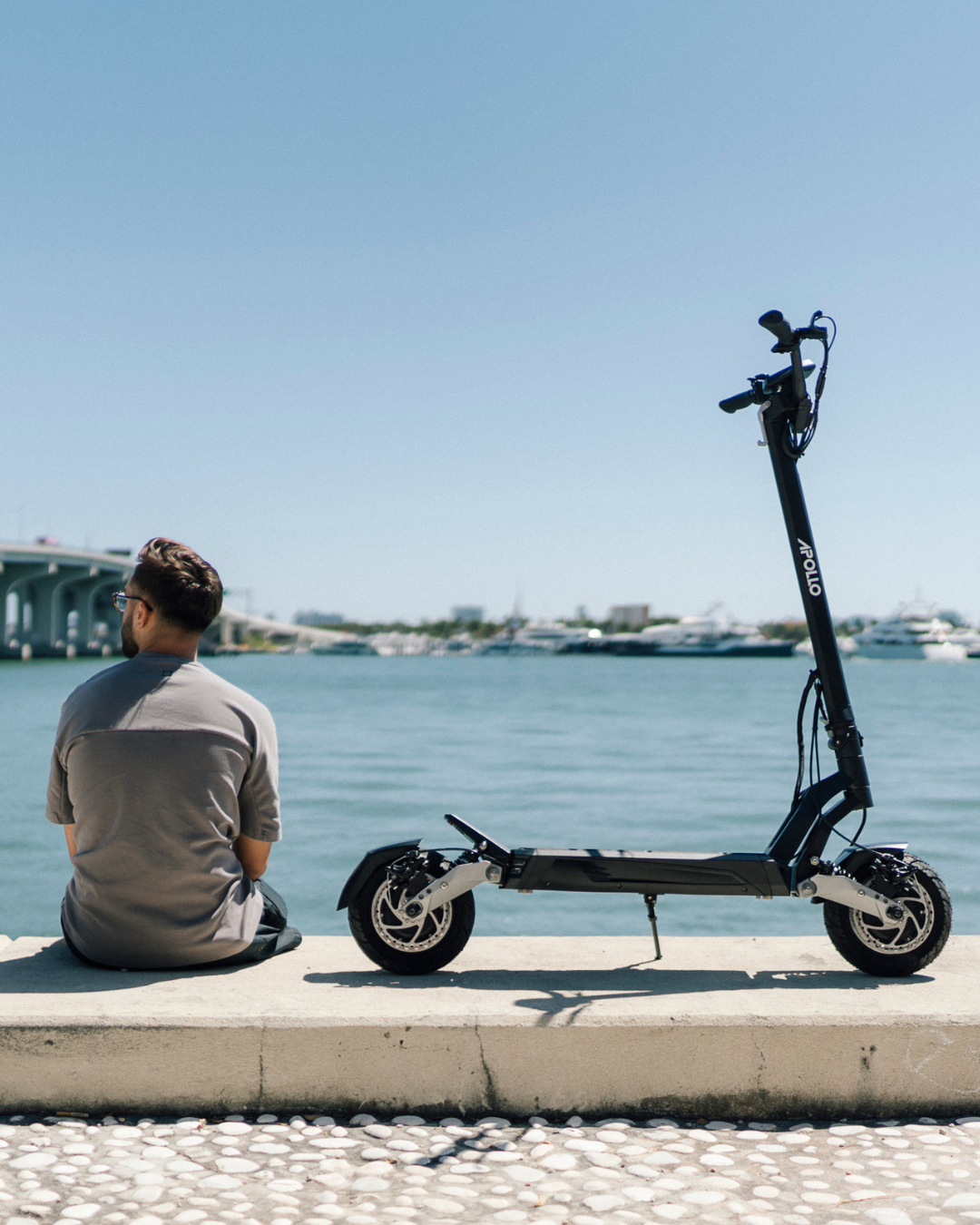
Inspección de scooter eléctrico
Es la temporada para salir y montar scooters eléctricos, pero antes de hacerlo, querrás asegurarte de que tu vehículo esté seguro y listo para circular.
En lugar de arriesgarse a sufrir pinchazos o fallas eléctricas, es mejor dedicar más tiempo a inspeccionar su scooter y realizar un mantenimiento básico antes de salir a la carretera.
Pero, ¿qué debes buscar, además de señales obvias como piezas rotas o neumáticos pinchados?
En este artículo, repasaremos las distintas partes de un scooter eléctrico y hablaremos sobre cómo puedes asegurarte de que estén a la altura, por así decirlo, para andar en primavera y verano.
Querrás asegurarte de tener algunas herramientas a mano. No necesitarás equipo especial. Una bomba de bicicleta estándar, un destornillador, un poco de lubricante de silicona y un juego de llaves Allen deberían ser suficientes para la tarea.
Si necesita parchar o cambiar una cámara de aire en una llanta pinchada, también necesitará un kit de parche o una cámara de repuesto y palancas de llantas, whque deberías llevar contigo veces.
Hazlo tú mismo
Es posible que estés acostumbrado a llevar bicicletas al taller de reparación para una puesta a punto antes de que comience la temporada. Pero la mayoría de las tiendas de bicicletas no trabajan con scooters eléctricos. Si vive al lado de un centro de servicio de scooters, tiene sentido traer su vehículo y que los mecánicos le muestren los conceptos básicos.
Pero puedes aprender a poner a punto tu scooter eléctrico en casa (y tus bicicletas). Una puesta a punto es solo un enfoque sistemático para abordar el desgaste antes de que provoque accidentes o averías.
Piense en las puestas a punto como un cuidado preventivo para su scooter, una forma de mantenerlo en la carretera y fuera del taller.
Mantenga limpio su scooter
Se puede evitar tanto desgaste y reparaciones costosas limpiando la suciedad y la mugre de las piezas sensibles antes de que causen corrosión.
Quieres conducir una máquina limpia, así que usa estos consejos para mantener tu scooter libre de residuos dañinos.
Revise la presión de sus neumáticos/Inspeccione sus neumáticos
Como les gusta decir a los vendedores de llantas, las llantas son la parte más importante de su vehículo. En gran medida, no se equivocan.
No irás a ninguna parte con una llanta pinchada. Desea asegurarse de evitar el problema mucho antes de alejarse millas de su casa.
El mantenimiento de los neumáticos, entonces, implica más que simplemente verificar la presión de los neumáticos, aunque eso puede ser lo más importante que haga.

Para comprobar la presión, necesitará un manómetro de neumáticos. Lo ideal es que tengas una bomba con un manómetro confiable incorporado que mida la presión en PSI (libras por pulgada cuadrada).
Algunos neumáticos (llenos de aire) tendrán válvulas dobladas para ahorrar espacio. Tenga en cuenta que no podrá llenarlos sin un adaptador.
Si tienes neumáticos sin cámara, puedes probarlos a baja presión para mayor comodidad. Si sus neumáticos tienen cámaras de aire, querrá utilizarlas más cerca de la presión recomendada para evitar pinchazos.
Lubrique las piezas mecánicas para mantenerlas en movimiento sin problemas
Utilice lubricante de silicona o litio. NO utilice WD-40 en piezas de scooter eléctrico.
Lubrique las piezas de la suspensión delantera y trasera, el mecanismo de plegado y otras partes del scooter que puedan haber chirriado un poco con el tiempo.
Sin embargo, NO aplique lubricante a las piezas de los frenos ni lo rocíe cerca de las pastillas de freno, y no rocíe lubricante en las piezas eléctricas como el motor o los ventiladores de refrigeración.

Compruebe si hay cables y conectores sueltos. Verifique todas las luces e interruptores
Dondequiera que vea cableado en el scooter, asegúrese de que todas las conexiones estén apretadas y que ninguno de los cables esté pelado.
Asegúrese de que los conectores de los cables estén bien sujetos y que no quede ningún cable desnudo expuesto en el scooter eléctrico.
Se puede utilizar un sellador de silicona transparente de grado eléctrico para cubrir cualquier cable desnudo que pueda encontrar.
Busque tornillos flojos, pero NO los apriete demasiado
Consejo profesional: un poco de Loctite azul (muy poco) en tornillos y sujetadores importantes ayuda a mantenerlos en su lugar. lugar.
Revise los tornillos en las palancas de freno y las piezas del manillar y la potencia, luego las piezas y ejes de la suspensión, las pinzas de freno y las piezas plegables.
Comience con una inspección general, revisando cada parte individual del scooter en busca de tornillos flojos. Ya sea que apriete tornillos de cabeza Philips, cabeza plana o cabeza hexagonal, ¡asegúrese de no apretar nunca demasiado!
Apretar demasiado puede exceder las tolerancias de los materiales del scooter y provocar piezas rotas, tornillos pelados y componentes eléctricos dañados.

Realizar mantenimiento de frenos de rutina
Realmente sólo necesita realizar mantenimiento en los frenos de disco mecánicos o hidráulicos.
Los frenos regenerativos no requieren mantenimiento y los frenos de tambor mecánicos generalmente están sellados y no requieren ajuste ni limpieza. Esta combinación hace que los scooters como los
Sin embargo, los frenos de disco necesitan cuidado regular porque están expuestos a los elementos. Si bien a muchos ciclistas les encantan los frenos de disco por su rendimiento, la limpieza y el ajuste regulares son necesarios si tienes un scooter eléctrico que los tenga.
Limpieza de frenos
Primero, debe limpiar los rotores de freno con toallitas con alcohol o una pequeña cantidad de alcohol isopropílico sobre una toalla limpia y húmeda una vez a la semana.
Deje que los rotores se sequen al aire por completo antes de aplicar los frenos.
La limpieza de los rotores elimina la suciedad y los residuos que degradan las pastillas de freno.
Puede limpiar las pastillas de freno con un paño limpio y húmedo, pero no utilice solventes, alcohol ni limpiadores en las pastillas.
Ajuste de los frenos de disco
Las pinzas de freno de disco hidráulico suelen ser autoajustables, pero las pinzas mecánicas deben configurarse a mano. Esto a menudo implica girar un ajustador de barril en el sentido de las agujas del reloj o en el sentido contrario a las agujas del reloj para acercar o alejar las pastillas de freno del rotor.
Por lo general, querrás que las pastillas estén lo suficientemente cerca de los rotores para que muerdan relativamente pronto durante el frenado, pero no tan cerca como para que los rotores rocen contra las pastillas.
Configurar los frenos por primera vez en un scooter eléctrico puede ser un poco complicado, por lo que definitivamente querrás ver un video tutorial sobre este primero.
Si el roce de los frenos es un problema grave, es posible que tenga un rotor doblado.Este es otro problema que puedes solucionar fácilmente con herramientas que tengas en casa.
Coloque su scooter eléctrico sobre una mesa o banco de trabajo y haga girar la rueda con el rotor doblado. (Si observa la rueda desde atrás, debería poder ver la parte del rotor que se dobla a medida que desacelera. Tenga paciencia, esto puede requerir algo de tiempo y una observación cuidadosa).
Una vez que hayas encontrado el punto doblado, márcalo con un marcador mágico. Puedes usar un par de alicates para doblar suavemente esa parte del rotor en la dirección en la que debe ir. ¡Trabaja lentamente para no doblarlo en la otra dirección! Revisa tu trabajo con frecuencia.
Encontrará varios vídeos sobre mantenimiento y reparación de frenos y otros consejos de cuidado preventivo hechos por usted mismo en
Conclusión
Preparar su scooter eléctrico para la temporada manteniéndolo limpio, inspeccionando las piezas estructurales y el cableado, llenando los neumáticos y ajustando los frenos puede ahorrarle muchos problemas en el futuro.
Si bien es una buena idea que un profesional revise su scooter cada pocos cientos de millas, si es posible, usted mismo puede realizar la mayor parte del mantenimiento de rutina y las pequeñas reparaciones.
Sigue consultando





